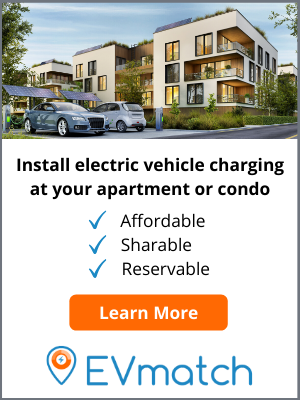Blog
How Will We Charge Millions Of Electric Vehicles With Renewable Energy While Maintaining A Balanced Grid? Utilities Will Use Demand Response
July 31, 2019
Post Author

As our electricity and transportation systems evolve to be powered by renewable energy sources, we will need creative solutions to help balance the supply and demand of electricity. So how do electric vehicles fit into this supply and demand equation?
Before we talk about the trifecta that is utilities + electric vehicles + demand response, let’s talk about some energy basics.
As much as we have learned to expect electricity at any time that we turn on a switch, it is important to remember that the electricity grid is a system that needs to constantly maintain a delicate balance of supply and demand. To keep the grid stable, supply and demand need to always match. How do the providers of electricity, like utilities and system operators, keep such a complex system balanced?
First, they use lots and lots of data. Electricity providers have gotten very good at predicting trends in electricity usage based on previous use on similar days, weather forecasts, and all sorts of other factors that influence when people use electricity. In Southern California, if the weather forecast is off by 1 degree in the summer, that could mean an extra 300 MW of generating capacity needs to be turned on. That’s roughly the equivalent of powering 200,000 homes. Big spikes in electricity use can be caused by many things. For example, Britain saw a spike of 2,800 megawatts in demand after England lost the 1990 World Cup semi-final penalty shootout against West Germany. That’s 1.1 million tea kettles being turned on at once!
Traditionally, changes in demand are addressed by adjusting the supply of electricity. Power plants can be temporarily shut down or adjust their output to precisely match the demand on the grid.
Demand Response
It is just as effective to adjust the demand for electricity as it is to adjust the supply. Demand response is just a change in the power consumption of an electric utility customer to better match the demand for power with the supply. I know what you’re thinking – it sounds like herding cats. Fortunately (maybe in a slightly Orwellian sense), utilities have developed, and continue to develop, complex methods to manipulate customer behavior.
The more widespread application of this idea is a voluntary reduction in electricity use on especially hot days. On a hot summer day in California, CAISO, the entity that operates California’s grid, might call a flex alert. Residential and commercial electricity users would be asked to only use essential appliances and turn the thermostat to a higher temperature. Time of use (TOU) rates are another tool utilities use to alter demand, charging high prices for electricity at peak times like after work.
The idea of demand response has some broader applications as the electricity grid has begun to change. As more renewable sources of electricity have come online, it has become more complicated to balance the grid when the sun isn’t always shining and the wind isn’t always blowing. So demand response can be used as a way to encourage people to use cleaner energy and help balance the grid.
Demand response is also a valuable service to provide from the perspective of the utilities. In some states, demand response resources are even allowed to be bid onto the wholesale electricity market. That way, companies and people who participate in demand response programs can get paid to save electricity the same way generators are paid to produce it.
Demand Response and Electric Vehicles
Things get really interesting once electric vehicles enter the mix. Charging an EV represents a large amount of electricity demand, so it becomes very important to understand or control when charging happens in order to balance the grid. For a sense of scale, an average Level 2 EV (240V) charger is about the same electrical load as an average household, which means you’re doubling your home’s load when you plugin! When charging your EV, you may already plan around peak times when electricity costs are high. Soon, you may be able to get paid just to NOT charge your vehicle during peak times!
There are already demand response programs out there for residential customers. If you own an Enel X JuiceBox EV charger, you can participate in their JuicePoints program. You can program your charger to be flexible about when it will charge, and the charger will optimize your charging to use as much renewable energy as possible. On top of that, you get paid for your flexibility because JuicePoints can be redeemed for cash.
There are similar programs out there for your residential energy use in general. OhmConnect pays residents to reduce their electricity usage during an “OhmHour”, which happens about once a week when electricity generation is dirtiest. By using less, OhmConnect rewards you with points that can be redeemed for cash or donated to a charity of your choice. OhmConnect also has an option to connect smart devices to save electricity for you, including your EV charger.
Electric vehicles participating in demand response programs will be an integral part of ensuring that renewable energy sources can be used effectively. Programs like these will help everyone participate more directly in the energy system; both by earning money through participation in the programs and understanding the impact of our energy use.








